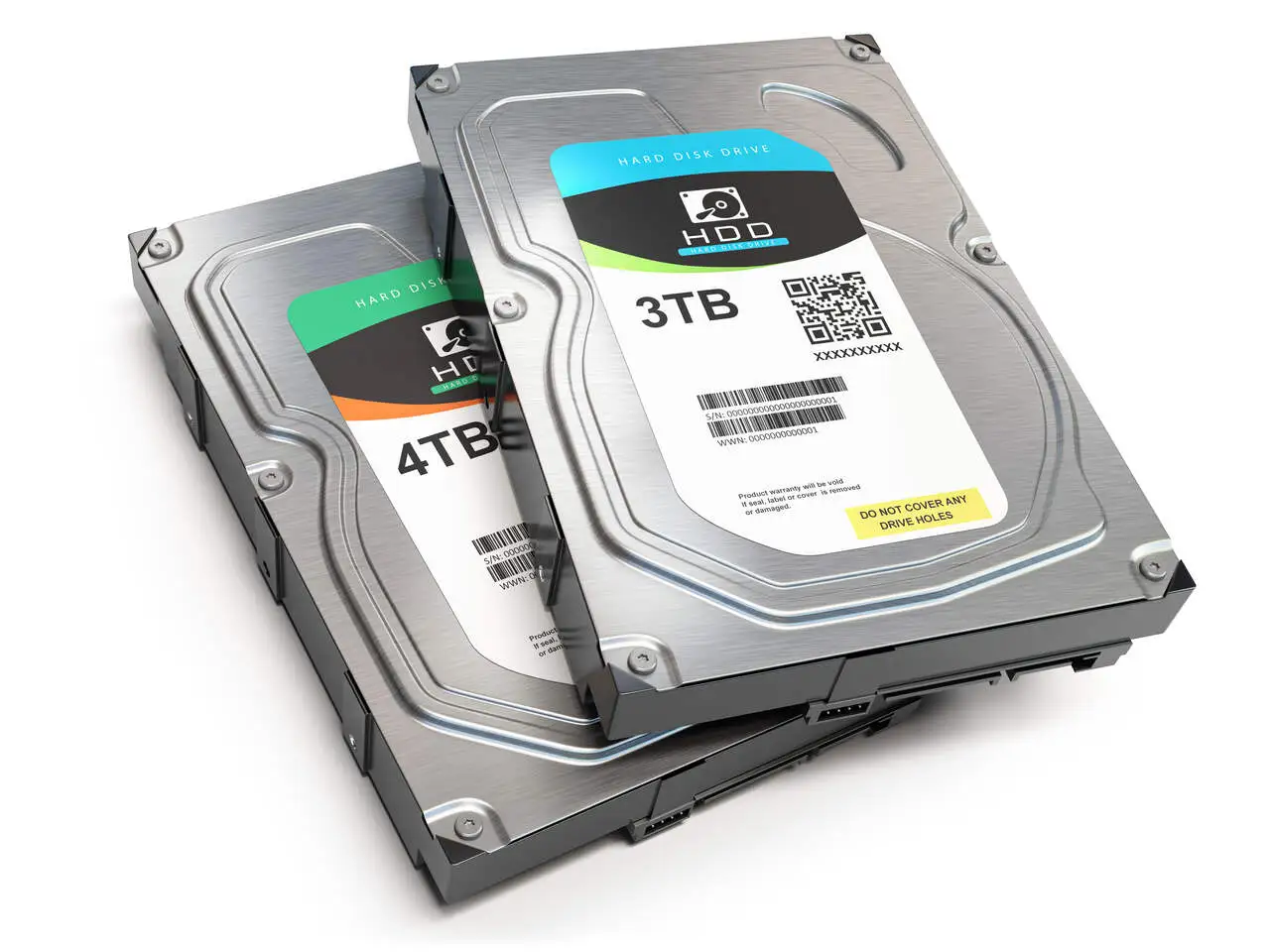The RAID 5 system, which stands for “Redundant Array of Independent Disks”, is a storage technology that offers a balance between performance, capacity and fault tolerance. In this system, several hard discs are combined into a single logical volume, providing significant benefits in terms of reliability and performance.
Unlike some RAID configurations, such as RAID 0, which focus mainly on performance, RAID 5 stands out for its redundancy and data recovery in the event of a failure. The basic operation involves data distribution and parity between the discs. Each block of data is written to a different disc, and parity is distributed between the discs. This provides a level of fault tolerance, because if one disc fails, the data can be reconstructed using the parity information from the other discs. Even so, in some cases, data loss becomes irreversible through “normal” paths, at which point RAID recovery solutions developed by data recovery companies become necessary.
The RAID 5 system can be implemented in a variety of storage devices, including conventional hard discs and, more recently, solid state drives (SSDs). The choice between HDDs and SSDs will depend on specific needs, considering factors such as performance, reliability and cost.
Comparison between RAID 5 with SSDs and RAID 5 with HDDs
Implementing RAID 5 with SSDs (Solid State Drives) and HDDs (Hard Disk Drives) presents some significant differences in terms of performance, reliability and practical considerations. Let’s explore the main differences between RAID 5 using SSDs and HDDs:
Performance
- RAID 5 with SSDs: SSDs offer much faster access times and higher data transfer rates compared to HDDs. This results in significantly better overall performance, especially in random read and write operations.
- RAID 5 with HDDs: Traditional HDDs are slower compared to SSDs, especially in terms of access times and random transfer rates. Performance can be limited by the mechanical speed of the discs.
Reliability
- RAID 5 with SSDs: SSDs are generally more reliable in RAID environments due to the lack of moving parts. They are less prone to mechanical failure, which contributes to greater system reliability.
- RAID 5 with HDDs: HDDs have mechanical parts, such as rotating discs, which can eventually fail. This can increase the risk of failure compared to SSDs.
Shock and Vibration Resistance
- RAID 5 with SSDs: SSDs are resistant to shocks and vibrations because they have no moving parts. This makes them ideal for environments with physical movement, such as mobile servers or systems in vehicles.
- RAID 5 with HDDs: HDDs are sensitive to shock and vibration, which can impact reliability, especially in harsh environments.
Energy consumption and temperature:
- RAID 5 with SSDs: SSDs generally consume less power and generate less heat compared to HDDs. This can result in lower power consumption and cooling requirements.
- RAID 5 with HDDs: HDDs tend to consume more energy and generate more heat due to the mechanical nature of their operation.
Cost
- RAID 5 with SSDs: SSDs are generally more expensive per storage capacity compared to HDDs. However, prices have been falling, and the cost-benefit ratio can be justified by superior performance and reliability.
- RAID 5 with HDDs: HDDs are more affordable in terms of cost per gigabyte, but can result in additional costs due to the need for more physical space, power and cooling.
Choose according to your needs
- RAID 5 with SSDs: Recommended for applications that require high performance, reliability and shock resistance, such as critical business environments.
- RAID 5 with HDDs: Still a viable option for environments where cost per gigabyte is crucial and absolute performance is not a priority.
Differentials and Advantages of the RAID 5 System
- Fault tolerance: RAID 5 is able to withstand the failure of one of the discs without data loss. Distributed parity allows the reconstruction of lost data.
- Performance: Although not as fast as RAID 0, which focuses exclusively on performance, RAID 5 offers a good combination of performance and redundancy.
- Usable Capacity: Unlike RAID 1, which mirrors the data, RAID 5 offers significantly more usable capacity, since only one disc is used to store parity.
- Cost Effective: Compared to more advanced storage solutions such as RAID 6, RAID 5 is many times more economical in terms of cost per gigabyte of storage.
Disadvantages of RAID 5
- Write Performance: Write performance can be slower compared to RAID configurations that don’t involve parity, such as RAID 0.
- Risk During Rebuild: There is an increased risk of failure during the rebuild process after replacing a defective disc, because if a second disc fails during this period, all data could be lost.
- Management Complexity: Implementing and managing RAID 5 can be more complex than simple configurations such as RAID 1, especially in large-scale environments.
RAID 5 is a popular choice for environments that require a balance between performance and redundancy. However, it is essential to carefully consider the specific storage needs and associated disadvantages before deciding to implement this RAID arrangement. In situations where fault tolerance is crucial, other options such as RAID 6, which offers greater redundancy, may be more suitable.
Comparison of RAID Levels: RAID 0, RAID 1, RAID 5 and RAID 6
RAID 0
- Performance: RAID 0 offers high performance because the data is divided between the discs, increasing the transfer rate.
- Fault tolerance: No fault tolerance; the failure of any disc results in the total loss of data.
- Space utilisation: Uses 100% of the available storage space, without redundancy.
RAID 1
- Performance: Fast reading, but writing can be slower. Offers data mirroring for redundancy.
- Fault Tolerance: Tolerant to the failure of a disc, since the data is mirrored.
- Use of space: Half of the total space is used for redundancy.
RAID 5
- Performance: Balance between performance and redundancy, with good read and moderate write performance.
- Fault tolerance: Tolerant to the failure of a disc; parity is used to reconstruct lost data.
- Space usage: More space-efficient than RAID 1, it uses N-1 discs for storage.
RAID 6
- Performance: Similar to RAID 5, but with greater parity complexity to tolerate the failure of two discs.
- Fault tolerance: Fault tolerance of two discs, offering greater security.
- Uso de Espaço: Menos eficiente em termos de espaço do que RAID 5, utiliza N-2 discos para armazenamento.
General Comparison
- Performance: RAID 0 is the best in pure performance, but lacks fault tolerance. RAID 5 balances performance and fault tolerance. RAID 1 and RAID 6 offer redundancy, but lower performance.
- Fault tolerance: RAID 1 and RAID 5 tolerate the failure of one disc. RAID 6 is more resilient, tolerating the failure of two discs. RAID 0 has no fault tolerance.
- Space usage: RAID 0 uses 100%, RAID 1 uses 50%, RAID 5 uses N-1 discs, and RAID 6 uses N-2 discs for effective storage.
Choose according to your needs:
– RAID 0 for maximum performance without redundancy.
– RAID 1 for simple redundancy and fast reading.
– RAID 5 for a balance between performance and redundancy.
– RAID 6 for greater fault tolerance, but at a higher storage cost.



